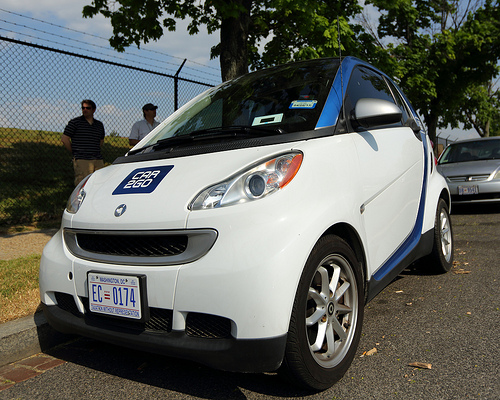If you live in Seattle and you haven’t yet seen one of those charming little car2go vehicles humming delightfully up your local hill, I really don’t know where you’ve been hiding. There are 330 of them zipping around the city now.
And those numbers helped push the number of car-sharing locations in Seattle to 429—and sixth place nationally—according to a new infographic by the clever folks over at Walk Score. But yet again, Portland bested its northern neighbor: the Rose City ranked number four, with about ten percent more car shares than Seattle (537). That’s consistent with what we found a few months back, when we looked at the Northwest’s car-sharing Olympics—Portland lagged behind Vancouver in our initial ranking but placed well ahead of Seattle.
See the full car-sharing infographic after the jump…

Just to be clear: this is mostly for informational purposes; it’s in no way a definitive ranking. It undercounts shared vehicles in at least two ways: first, because some car-sharing locations have more than one vehicle; and second, because it excludes peer-to-peer car-sharing services such as Relay Rides and Getaround. And the number of car-sharing locations doesn’t necessarily speak to how convenient car-sharing services are—which might be measured as the number of car-sharing locations per square mile, or perhaps the number of shared vehicles per 1,000 residents.
Still, this infographic represents a good first step towards gauging different cities’ progress with car sharing. And perhaps most important of all, car sharing makes a great addition to Walk Score’s market-leading assessment of neighborhood walkability—which has already made it easier than ever to find the sort of neighborhood that fosters the “car-lite” lifestyle.


Comments are closed.